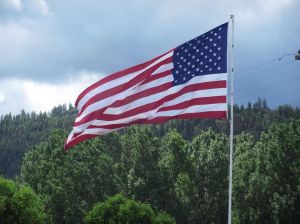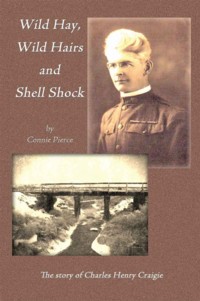This is the season for gratitude. From Veteran’s Day through the many faith-based celebrations clustered around the turning of the year, it is a time when we at least try to look beyond the glitter and find a reason to be grateful, a reason to have hope. In that spirit, now and through the year, we find ourselves wanting to thank those we feel helped to make this life possible. I often hear a brief conversation, a sentence or two at an event, that acknowledges the service of a veteran. Each time such brief moments make my heart hurt. I’m sorry, but “thank you” is not enough.
My teen years were spent in the Vietnam era. I lived in a city that was surrounded by military bases and the cost of that commitment contributed much to how I perceive the world. There are those that will tell you it is mere urban legend that if our troops wore their uniforms when returning from active duty, they risked ridicule and abuse. No, no legend. I was there. Whatever my thoughts were on why we were there and how the “military action” was executed, I wept when I saw those who had suffered so much, who came home broken in ways not always obvious, abused in their own country. This is the root of my issue with “thank you for your service.” Even for today’s vets, it is not enough.
I like to find ways to actively pursue solutions, ways to help. I am a fixer, but I also like to be effective. Growing up with veterans, I learned a great deal of what went on in their heads, and I wanted to help. That sometimes requires finding out from the source of your compassion just what it is that is needed. Sometimes we get it right.
Veterans in this country face horrific statistics. According to the NIH in a report published on the Department of Veteran Affairs website, 1.7 million veterans received treatment in a VA mental health specialty program in fiscal 2018. Programs included treatment for PTSS, substance use disorders, behavioral problems and a host of other issues. This number includes only those that accessed VA resources.
The 2019 National Veteran Suicide Prevention Annual Report published by the Department of Veteran Affairs notes that 6,000 vets commit suicide each year. This crosses gender and age boundaries. That is an average of 16 men and women each and every day.
While you are saying “thank you” to the spiffy looking fellow in a uniform at the local restaurant, are you thinking of the scruffy fellow on the sidewalk that hasn’t had a bath in who knows when? According to the National Alliance to End Homelessness, 9% of the homeless population in this country is made up of vets. Some 37,878 broken spirits; men and women who just don’t see a way to cope in society. Some, of course, choose to separate themselves from a society and a culture that cannot comprehend the places they’ve been and the things they have seen.
Doing what I do, even after years of accumulated stories and nights sitting up with friends dealing with things that would not leave their heads, I still felt it necessary to do the research. I asked a friend of mine if I could visit one evening and grill her husband on what he saw as the greatest need for vets today. His answer might surprise you; education and job placement support.
The GI Bill, established to provide help for education in trades or professions is an elusive benefit that changes with when you served, how long, and where. Vietnam was a battle ground between the president and congress and the legal status of Vets in the conflict was ambiguous at best. This impacted many of the benefits which may have been available to men and women who served in that theater.
The other issue he noted was job placement assistance. He felt that the least the military branches could do was to help veterans transition into civilian life. Knowing how to blow things up is not always a useful civilian skill. Leadership skills, logistics, technology, mechanics, construction, and a myriad of other skills most certainly are. During my interview he expressed his frustration when he returned home after his first term of service. He thought he was only suited for jobs in the security sector. Never really finding the right fit, he finally elected to re-enlist in a different branch. His second time home he was lucky. His mother-in-law pointed out that all of his time as a leader in the military had trained him as a manager. He applied to a position and found a new career. Even if a veteran had a solid career before serving, that job may no longer be a fit.
I don’t think it is important to find the perfect job. However, it is important to find a place that reconnects a person to society and gives them some sense of being of use, some sense of belonging. Part of transitioning to civilian life is adjusting to a less intense more loosely associated culture than the intense life or death relationships of foreign service. Success occurs in degrees; failure can be deadly.
Above all, we spend millions training our military personnel to do damage to others. That is what war is. Although we deploy to a few “nation building” exercises, such deployment often occurs in hostile environments. Even when stationed with allies, our military people are usually not culturally assimilated by the host nation. Military service is an intense training course on how NOT to deal with the society in which you find yourself. Then you come home, and there is no one there that can begin to understand that separation from the wider world while becoming ever more dependent on highly disciplined, insular core group.
Where does one go to help with such things? Not everyone has time (but some do), not everyone has money to donate (but some do). Sometimes it is a matter of letting someone know that there is a resource out there, they just need to reach out. Such as we have, we give – that’s why “thank you” is never quite enough.
With a little research, I found several organizations that specialize in job assessment and placement. Remember, the local VFW and American Legion posts are always willing to help sort things out. Both the VFW and American Legion often have counselors and staff to help a vet find the help needed. Local posts can be found on the websites (https://www.vfw.org/ and https://www.legion.org/).
Also, check out these links for information on how to get careers shifted back to a civilian focus.
http://www.veterans2work.org/veterans.html
https://www.militaryonesource.mil/military-life-cycle/separation-transition/employment-education/programs-that-hire-veterans
https://www.dav.org/veterans/employment-resources/
There are other ways to be proactive. There are many organizations that do amazing things such as providing companion dogs, offering financial assistance and counseling, and providing mental health services. There is also support such as Music Corp, Wounded Warrior Project, and Honor Flight. Final Salute is an organization that focuses on homeless women vets and their children. This season make it a point to find a better thank you.
https://www.finalsaluteinc.org/Home.html
https://www.honorflight.org/
https://www.operationhomefront.org/
https://www.woundedwarriorproject.org/
https://www.co.thurston.wa.us/distcrt/services/mental-health-and-veterans-court/
http://nchv.org/index.php/getinvolved/getinvolved/how_you_can_help/
https://www.vetdogs.org/Default.aspx
https://veteransfamiliesunited.org/financial-assistance/
https://warriors1st.org/
http://www.musicorps.net/Home.html
https://www.workingdogsforvets.org/
https://tcvs.us/




You must be logged in to post a comment.